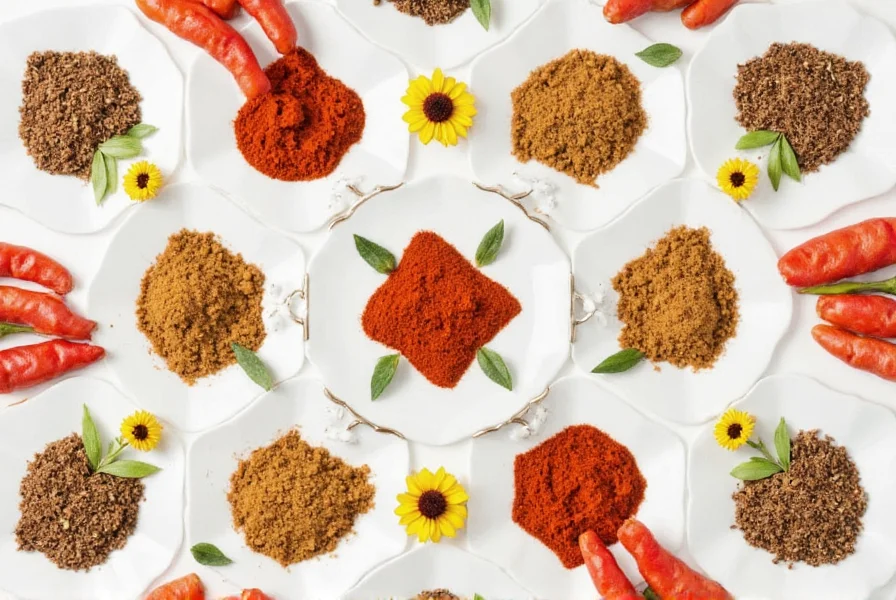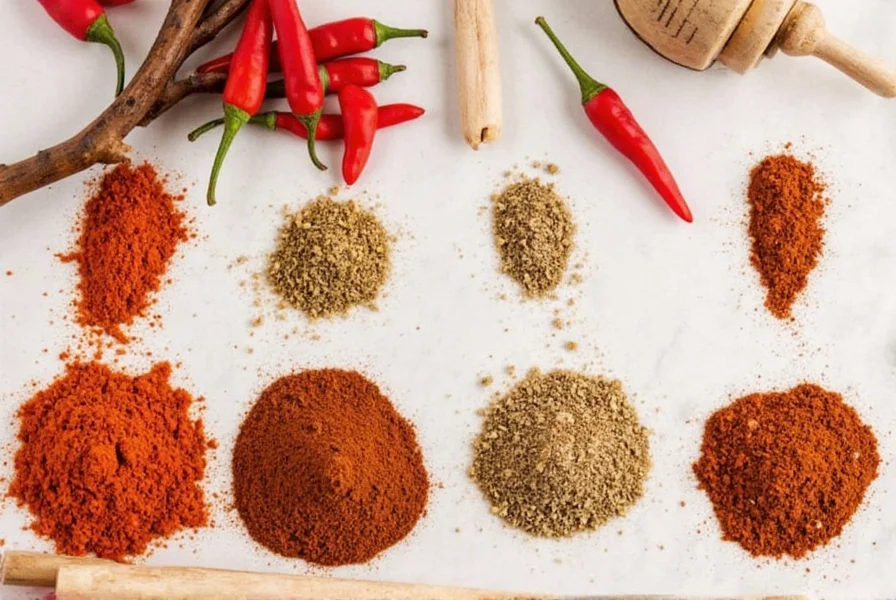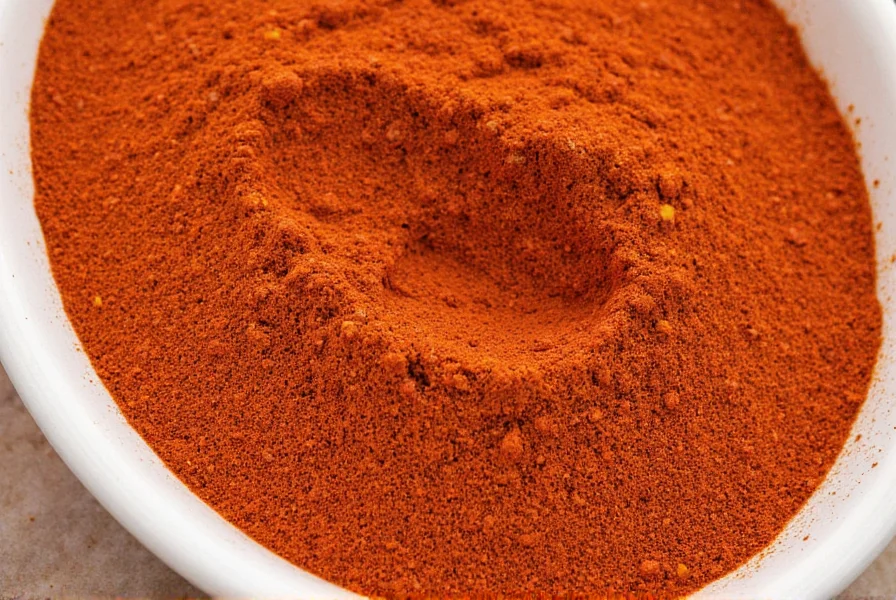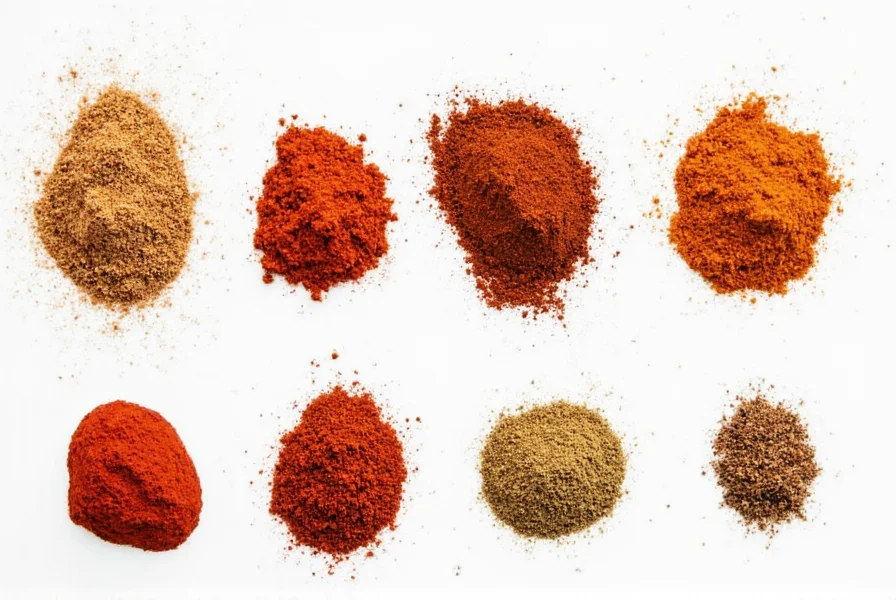
The best Aleppo pepper substitutes include Maras pepper (closest match), Urfa Biber, and a paprika-cayenne blend. Here's a detailed guide to the top 7 options with heat levels, flavor profiles, and cooking applications to maintain recipe authenticity.
Top 7 Aleppo Pepper Substitutes
- Ancho Chili Powder: Sweet, mild, and slightly smoky.
- Crushed Red Pepper Flakes: Spicy and versatile, though less fruity.
- Paprika + Cayenne Blend: Offers color and customizable heat.
- Cayenne Pepper: Hotter than Aleppo but lacks sweetness.
- Urfa Biber (Isot Pepper): Smoky, raisiny notes with deep flavor.
- Chipotle Powder: Adds a strong smoky kick.
- Maras Pepper: The closest cousin in terms of origin and taste.
| Pepper Type | Heat Level (SHU) | Flavor Profile | Best For |
|---|---|---|---|
| Aleppo Pepper | 7,000–10,000 | Fruity, smoky, earthy | Mediterranean dishes, grilling, rubs |
| Ancho Chili Powder | 1,000–2,000 | Sweet, smoky, raisin-like | Stews, sauces, mole |
| Crushed Red Pepper Flakes | 30,000+ | Sharp, spicy, minimal sweetness | Pasta, pizza, soups |
| Paprika + Cayenne Blend | Varies (adjustable) | Earthy with adjustable heat | Versatile use across cuisines |
| Cayenne Pepper | 30,000–50,000 | Bright, intense heat | Spicy recipes, hot sauces |
| Urfa Biber | 10,000–30,000 | Smoky, raisin, tobacco-like | Meat rubs, grilled veggies, Turkish dishes |
| Chipotle Powder | 5,000–10,000 | Smoky, bold, fiery | Mexican food, barbecue, tacos |
| Maras Pepper | 7,000–10,000 | Very similar to Aleppo | Authentic Levantine recipes |
What Is Aleppo Pepper?
Aleppo pepper comes from the famous Syrian city of Aleppo, known for its rich culinary heritage. It’s made from dried, crushed Maras-type chilies that are typically rubbed with oil to give them a slightly flaky texture.
With a moderate Scoville rating (around 10,000 SHU), Aleppo pepper brings the heat but also a beautiful depth of flavor — think fruity, smoky, and earthy all at once. It's a staple in Levantine cuisine and often used to season meats, vegetables, pastes like harissa, and even breads.
Why You Might Need a Substitute
Let’s face it — Aleppo pepper isn’t always easy to find. It might be out of stock at your local store, or shipping delays mean you can't get your hands on it before your dinner party starts.
Also, depending on where you live, access to authentic Aleppo pepper has become more limited due to regional conflicts and supply chain issues. Plus, some home cooks may prefer a milder or spicier alternative based on their personal taste or dietary needs.
Buying Guide: Choosing the Right Replacement

When shopping for an Aleppo pepper substitute, keep these factors in mind:
- Heat Level: Know how spicy your dish should be. If unsure, go for a blend like paprika + cayenne so you can adjust the heat.
- Flavor Notes: Look for smokiness, fruitiness, or earthiness to match the original flavor as closely as possible.
- Texture: Some substitutes come as coarse flakes, others as fine powders. Choose based on what works best for your recipe.
- Availability: If you need something fast, opt for commonly found options like crushed red pepper flakes or paprika blends.
- Use Case: Are you using it for seasoning meat, garnishing dips, or building flavor into a sauce? Tailor your choice accordingly.
Top Picks for Each Category
- Best Overall Substitute: Urfa Biber – offers smoky depth and moderate heat.
- Best Mild Option: Ancho Chili Powder – ideal if you want to tone down the heat while keeping complexity.
- Best for Heat Lovers: Crushed Red Pepper Flakes – sharp and punchy, great for adding bite.
- Most Versatile: Paprika + Cayenne Mix – tweakable to your liking.
- Closest Flavor Match: Maras Pepper – nearly identical to Aleppo in taste and heat.
How to Use These Replacements in Cooking

Using a substitute effectively means understanding how each pepper behaves in the cooking process. Here are some pro tips:
- Dry Rubs & Marinades: Opt for Urfa Biber or Chipotle powder to add depth and warmth.
- Simmered Dishes: Ancho or a paprika blend adds richness without overwhelming the palate.
- Garnishing: Crushed red pepper flakes or Aleppo-style flakes work well atop flatbreads, hummus, or yogurt dips.
- Grilling Meats: Urfa Biber and Maras Pepper enhance grilled chicken, lamb, and kebabs beautifully.
- Vegetarian & Vegan Dishes: Try a mix of smoked paprika and cayenne to build layers of flavor in roasted veg or lentil stews.
Final Thoughts

Replacing Aleppo pepper doesn't mean sacrificing flavor or authenticity. With the right substitution strategy, you can recreate that signature smoky-earthy note in almost any dish.
Whether you're experimenting with global flavors or simply trying to salvage a weeknight meal, these alternatives will serve you well. Keep this list handy, play around with combinations, and don’t forget — spice is meant to be fun!
So next time you're caught mid-recipe without Aleppo pepper, reach for one of these substitutes and keep the fire burning in your kitchen. 🌶️🔥
Frequently Asked Questions
What's the best 1:1 substitute for Aleppo pepper?
The best 1:1 substitute is Maras pepper, which comes from the same region and has nearly identical heat and flavor. If unavailable, a blend of 3 parts paprika to 1 part cayenne pepper most closely mimics Aleppo's moderate heat and rich color.
How much crushed red pepper should I use as a substitute?
Crushed red pepper is significantly hotter than Aleppo pepper. Use about half the amount called for in your recipe, then adjust to taste. For every 1 teaspoon of Aleppo pepper, start with 1/2 teaspoon of crushed red pepper flakes.
Can I use regular chili powder instead of Aleppo pepper?
Standard chili powder blends often contain additional spices like cumin and garlic powder, which will change your dish's flavor profile. For closer results, use ancho chili powder alone or mix paprika with a small amount of cayenne for heat.
Is Aleppo pepper very spicy?
Aleppo pepper has moderate heat (7,000-10,000 SHU), milder than cayenne but with more complexity. It provides warmth rather than intense burn, with distinctive fruity and earthy notes that make it popular in Mediterranean cooking.
Where can I buy Aleppo pepper substitutes?
Most substitutes are readily available: paprika and cayenne at any grocery store, Urfa Biber and Maras pepper at Middle Eastern markets or online specialty spice shops. Crushed red pepper flakes can be found in almost any supermarket.
How should I store my spice substitutes?
Store all spice substitutes in airtight containers away from heat and light. Ground spices maintain best flavor for 6-12 months. For longest shelf life, keep them in a cool, dark pantry or even refrigerate in humid climates.










 浙公网安备
33010002000092号
浙公网安备
33010002000092号 浙B2-20120091-4
浙B2-20120091-4